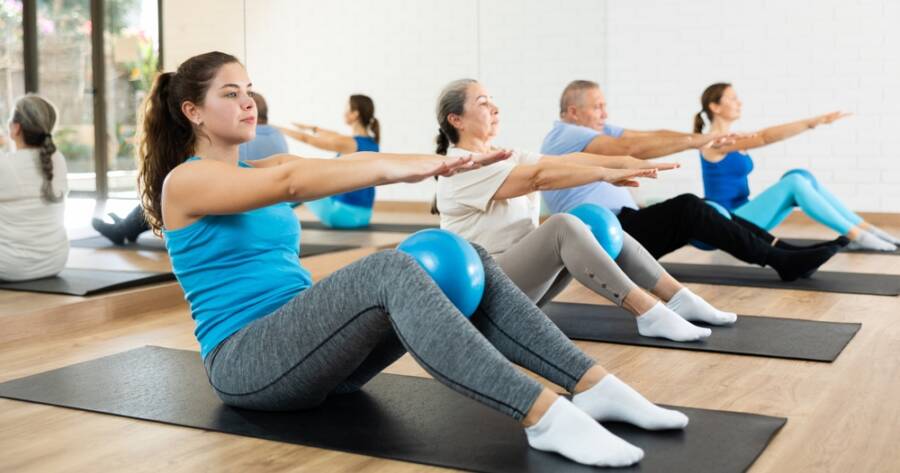Finding the right fitness practice that aligns with your goals and lifestyle can be overwhelming with so many options available. Among the most popular are yoga and Pilates—two disciplines that focus on mind-body connection, flexibility, and strength. While they may seem similar, they differ in techniques, goals, and benefits. This guide breaks down their unique features to help you determine which practice might suit you best, depending on your individual preferences and needs.
What Is Yoga?
Yoga is an ancient practice that originated in India over 5,000 years ago. It combines physical postures (asanas), breathing techniques (pranayama), and meditation to promote physical, mental, and spiritual well-being. Yoga often emphasizes balance, mindfulness, and connection to oneself.
Key Benefits of Yoga
- Improved Flexibility: Yoga can help improve joint and muscle flexibility gradually over time.
- Stress Management: Practices like meditation and controlled breathing may reduce stress and promote relaxation.
- Variety of Styles: There are many yoga styles, from dynamic Vinyasa to meditative Yin Yoga, catering to diverse needs.
- Accessibility: Yoga can often be modified to suit beginners or those with physical limitations.
Potential Considerations
While yoga offers numerous benefits, it may require patience, as some of its physical and mental results can take time. Certain styles, like power yoga or hot yoga, may be more physically demanding, which might not suit everyone.
What Is Pilates?
Pilates, developed by Joseph Pilates in the early 20th century, focuses on strengthening the core, improving posture, and enhancing body alignment. The practice can be mat-based or involve equipment like reformers, which use resistance to build strength.
Key Benefits of Pilates
- Core Strength: Pilates focuses on stabilizing and strengthening the core, which can improve posture and support overall body strength.
- Low-Impact Exercise: Its gentle, controlled movements are ideal for those looking for a low-impact option.
- Rehabilitation Focus: Pilates is often used for injury prevention and rehabilitation, as it targets muscle imbalances and alignment.
- Consistency: With regular practice, it may offer improvements in strength and muscle tone without bulking up.
Potential Considerations
Pilates might feel repetitive for some and requires equipment like reformers for certain variations, which might not always be accessible. It also focuses less on flexibility and spiritual aspects compared to yoga.
Similarities Between Yoga and Pilates
Both practices share overlapping benefits, including improving body awareness, reducing stress, and enhancing overall physical health. They also encourage mindfulness and controlled breathing, though with distinct approaches. Both can be adapted for various skill levels, making them accessible to beginners and seasoned practitioners alike.
Key Differences to Consider
Goal of the Practice:
- Yoga: Often aims for holistic well-being, blending physical fitness with mental and spiritual balance.
- Pilates: Primarily focuses on building core strength and improving physical alignment.
Flexibility vs. Strength:
- Yoga: Known for enhancing flexibility and joint health through deep stretches and poses.
- Pilates: Emphasizes controlled, strength-building exercises that target muscles, particularly the core.
Mindfulness Component:
- Yoga: Integrates meditation and mindfulness into its practice, focusing on inner awareness.
- Pilates: Incorporates mindfulness primarily through precision and control during movements.
Equipment Needs:
- Yoga: Generally requires minimal equipment—a yoga mat is usually sufficient.
- Pilates: May require additional tools such as reformers, resistance bands, and stability balls for some exercises.
Choosing the Right Practice for You
Consider Your Goals
- If you’re looking for improved flexibility, stress relief, and a spiritual connection, yoga might be more suitable.
- If you want to strengthen your core, improve posture, or support rehabilitation from an injury, Pilates could be a better fit.
Time and Accessibility
Yoga classes are often more widely available and accessible, with many free online resources. Pilates, particularly reformer-based sessions, may require specialized studios and equipment.
Physical Conditions
- Those with chronic pain or specific injuries might find Pilates’ focus on alignment and rehabilitation more beneficial.
- Yoga, with its wide range of styles, might be better for someone seeking a gentle yet holistic approach to fitness.
Try Both
To truly determine what works best for you, consider trying both practices. Many fitness studios offer introductory sessions, allowing you to explore their distinct benefits firsthand.
A Pathway to Better Health
Deciding between yoga and Pilates depends on your personal goals, lifestyle, and physical needs. While yoga offers a journey toward holistic well-being and flexibility, Pilates hones in on strength, alignment, and rehabilitation.
Each practice has its unique charm, and for some, a combination of the two may offer the perfect balance. Whatever you choose, committing to a consistent practice can lead to meaningful improvements in both mind and body over time. Ultimately, the best practice is the one that resonates with and supports your individual wellness journey.
